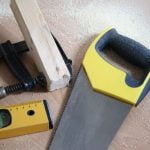What is the definition of a home improvement loan? A home improvement loan is a type of financing that homeowners can use to fund renovations, repairs, and upgrades to their properties. Whether it’s remodeling a kitchen, adding a new bathroom, or installing energy-efficient windows, a home improvement loan provides the necessary funds to make these projects a reality.
When it comes to financing home improvement projects, there are different options available to homeowners. Personal loans, home equity loans, and home equity lines of credit are just some of the types of home improvement loans that borrowers can consider. Each option has its own set of terms and conditions, as well as pros and cons to weigh before making a decision.
Understanding the concept of home improvement loans is crucial for homeowners looking to upgrade their properties. In this article, we will explore the different types of home improvement loans, eligibility criteria for borrowers, the application process, interest rates and terms, as well as tips for using a home improvement loan wisely.
Additionally, we will delve into real-life case studies of individuals who have successfully used home improvement loans to transform their homes. Whether you’re planning a small renovation or a major overhaul, this guide will provide valuable insights into the world of home improvement financing.
Different Types of Home Improvement Loans
When homeowners decide to undertake renovations or upgrades to their homes, they often need financial assistance to fund these projects. This is where home improvement loans come into play. But what is the definition of a home improvement loan?
A home improvement loan is a type of financing that allows individuals to borrow money specifically for the purpose of making improvements to their homes. These loans can be used for various projects, including kitchen remodels, bathroom renovations, roof repairs, or any other upgrade that enhances the value or livability of the property.
One of the main types of home improvement loans is a personal loan. Personal loans are unsecured loans offered by banks, credit unions, and online lenders. They are not backed by collateral such as a home or car, which means that borrowers do not risk losing their assets if they default on the loan.
Another option is a home equity loan, which allows homeowners to borrow against the equity in their homes. Homeowners can receive a lump sum payment with a fixed interest rate and set repayment terms. Lastly, home equity lines of credit (HELOC) also use the equity in a home as collateral but work more like a credit card with a revolving line of credit.
Each type of home improvement loan has its own eligibility criteria and requirements for borrowers to qualify. For personal loans, lenders typically consider an individual’s credit score and income when making lending decisions. Home equity loans and HELOCs require homeowners to have significant equity in their properties and good credit scores in order to qualify for favorable terms.
Ultimately, understanding the different types of home improvement loans available will help homeowners make informed decisions about how best to finance their renovation plans.
| Types of Home Improvement Loans | Description |
|---|---|
| Personal Loans | Unsecured loans offered by banks, credit unions, and online lenders based on credit score and income |
| Home Equity Loans | Borrow against the equity in their homes with lump sum payments, fixed interest rates and set repayment terms |
| Home Equity Lines Of Credit (HELOC) | Revolving line of credit using home equity as collateral similar to a credit card |
Eligibility Criteria for Home Improvement Loans
When considering a home improvement loan, it is essential to understand the eligibility criteria that borrowers need to meet in order to qualify for these types of loans. Each lending institution will have its own specific requirements, but there are some general criteria that are typically applied across the board.
Credit Score and History
One of the most important factors that lenders consider when evaluating a borrower’s eligibility for a home improvement loan is their credit score and credit history. Lenders want to ensure that the borrower has a good track record of managing their finances and repaying debts on time. A higher credit score will likely result in better loan terms and interest rates, while a lower credit score may make it more challenging to secure a favorable loan.
Income and Employment
Borrowers will also need to demonstrate that they have a stable source of income and reliable employment in order to qualify for a home improvement loan. Lenders want to see that borrowers have the means to repay the loan, so they will typically require proof of income such as pay stubs or tax returns. Self-employed individuals may need to provide additional documentation to verify their income.
Equity in the Home
For certain types of home improvement loans, such as home equity loans or home equity lines of credit, borrowers will need to have sufficient equity in their home. Lenders will typically require an appraisal of the property to determine its current value and calculate how much equity the borrower has available as collateral for the loan.
Understanding these eligibility criteria can help potential borrowers assess their likelihood of qualifying for a home improvement loan. By meeting these requirements, individuals can position themselves for success when applying for financing to renovate their homes.
Pros and Cons of Home Improvement Loans
When considering renovating a home, one of the most important factors to consider is how to finance the project. Home improvement loans can be an attractive option for homeowners looking to make upgrades but may not have the immediate funds available. However, it’s crucial to weigh the pros and cons of using this type of financing before making a decision.
One of the main advantages of a home improvement loan is that it provides homeowners with access to funds specifically for renovation projects. This means that they can make significant upgrades to their property without having to deplete their savings or use high-interest credit cards. Additionally, some home improvement loans offer competitive interest rates and flexible repayment terms, making them a more affordable option compared to other forms of borrowing.
On the other hand, there are also some drawbacks to consider when it comes to home improvement loans. For instance, taking on additional debt through a loan could put strain on a homeowner’s finances if they are unable to manage the repayments effectively. Furthermore, depending on the type of loan chosen, there may be fees and closing costs associated with the application process that can add extra expenses to the overall cost of the renovation project.
In summary, while home improvement loans can provide homeowners with access to much-needed funds for renovations, it’s important for individuals to carefully consider both the benefits and potential drawbacks before moving forward with this type of financing. It’s essential for borrowers to thoroughly research their options and assess their own financial situation before deciding whether a home improvement loan is the right choice for them.
How to Apply for a Home Improvement Loan
A home improvement loan can be a great way to finance renovations or upgrades to your property, but before you can start enjoying the benefits of this type of financing, you need to know the process of applying for one. Here’s a step-by-step guide to help you navigate through the application process for a home improvement loan.
The first step in applying for a home improvement loan is to determine the type of loan that best suits your needs. As mentioned earlier, there are different options available, such as personal loans, home equity loans, and home equity lines of credit. Each type of loan has its own requirements and terms, so it’s essential to do your research and choose the one that aligns with your financial situation and renovation plans.
Once you have chosen the right type of home improvement loan for your needs, the next step is to gather all necessary documentation. Lenders will typically require proof of income, credit history, employment information, and details about the renovation project. Having these documents ready will streamline the application process and increase your chances of approval.
After gathering all required documentation, it’s time to submit your application to the lender of your choice. Depending on the lender and type of loan, you may be able to apply online or in person. Some lenders also offer pre-qualification options, which can give you an estimate of how much you can borrow before formally applying for the loan.
| Step | Description |
|---|---|
| 1 | Determine the type of loan that best suits your needs |
| 2 | Gather all necessary documentation |
| 3 | Submit your application to the lender |
By following these steps and being prepared with all required information, you can navigate through the application process with confidence and increase your chances of securing a home improvement loan for your renovation project. Now that we’ve covered how to apply for a home improvement loan let’s take a closer look at understanding interest rates and terms associated with these loans.
Understanding Interest Rates and Terms
When considering taking out a home improvement loan, it’s essential to understand the various financial aspects involved. This includes interest rates, repayment terms, and fees associated with these types of loans. Below are some key points to consider when it comes to the financial aspects of home improvement loans:
- Interest Rates: Home improvement loans can either have fixed or variable interest rates. A fixed interest rate remains the same throughout the term of the loan, providing borrowers with predictability in their monthly payments. On the other hand, a variable interest rate can fluctuate based on market conditions, potentially leading to changes in monthly payments.
- Repayment Terms: The repayment terms for home improvement loans can vary depending on the lender and the type of loan. Some lenders offer short-term loans with quicker repayment periods, while others may provide longer terms for borrowers who need more flexibility in their payment schedule.
- Fees: It’s important to be aware of any fees associated with home improvement loans, such as origination fees, prepayment penalties, and closing costs. These additional expenses can add to the overall cost of the loan and should be considered when budgeting for home renovations.
Understanding these financial aspects is crucial when deciding whether a home improvement loan is the right choice for your renovation project. Carefully reviewing and comparing offers from different lenders will help you find a loan that best suits your financial situation and renovation needs.
Using a Home Improvement Loan Wisely
Setting a Budget and Prioritizing Projects
One of the most important aspects of using a home improvement loan wisely is to set a clear budget for your renovation projects. Before applying for a loan, carefully assess the cost of the improvements you want to make and prioritize them based on necessity and potential return on investment. This will help you avoid overspending and ensure that the loan amount is used efficiently for projects that will enhance the value and functionality of your home.
Comparing Lender Offers
When considering home improvement loans, it’s crucial to compare offers from different lenders to find favorable terms and rates. Look for competitive interest rates, flexible repayment terms, and low or no fees. By carefully evaluating multiple loan options, you can save money in the long run and choose the best financing option for your specific renovation needs.
Working With Reliable Contractors
To maximize the benefits of a home improvement loan, it’s essential to work with reputable contractors who have a track record of delivering quality work within budget and on schedule. Finding reliable professionals can contribute to the success of your renovation projects and ensure that the funds from your loan are invested in high-quality upgrades that increase the value of your home.
By following these tips, homeowners can make informed decisions when using a home improvement loan to renovate their properties. Careful planning, wise financial management, and strategic project execution can lead to successful home improvements that enhance comfort, aesthetics, and property value.
Case Studies
In conclusion, home improvement loans are a valuable financial tool for homeowners looking to make renovations or upgrades to their homes. Whether it’s a personal loan, home equity loan, or home equity line of credit, these options provide the necessary funds to complete projects that can enhance the value and livability of a property.
Understanding the eligibility criteria for home improvement loans is important for potential borrowers. Meeting requirements such as credit score, income verification, and property assessment will determine whether an individual qualifies for this type of financing. It’s essential to consider the pros and cons of home improvement loans before making a decision. While these loans offer access to necessary funds, they also come with potential drawbacks such as interest rates and fees.
When applying for a home improvement loan, borrowers should carefully consider the terms and interest rates associated with the loan. It’s crucial to compare different lenders and select the option that best fits their needs.
Using a home improvement loan wisely means maximizing its benefits and ensuring that the renovations or upgrades add value to the property in the long run. By learning from real-life case studies of individuals who have successfully used home improvement loans, homeowners can gain valuable insights into how to make the most of this financing option for their own renovation projects.
Frequently Asked Questions
What Is the Meaning of Home Improvement Loan?
A home improvement loan is a type of loan specifically designed for homeowners who want to finance renovations, repairs, or upgrades to their property. It allows them to borrow a lump sum of money and pay it back over time with interest.
Can You Use a Home Improvement Loan for Other Things?
While a home improvement loan is intended for funding home improvement projects, some lenders may allow borrowers to use the funds for other purposes. However, it’s important to clarify this with the lender before applying for the loan to ensure that it meets your specific needs and circumstances.
What Is the Average Length of a Home Improvement Loan?
The average length of a home improvement loan can vary depending on the lender and the borrower’s needs. Typically, repayment terms can range from a few years up to 20 years, allowing homeowners flexibility in managing their monthly payments based on their financial situation and the scope of the project.

I’m thrilled to have you here as a part of the Remodeling Top community. This is where my journey as an architect and remodeling enthusiast intersects with your passion for transforming houses into dream homes.





